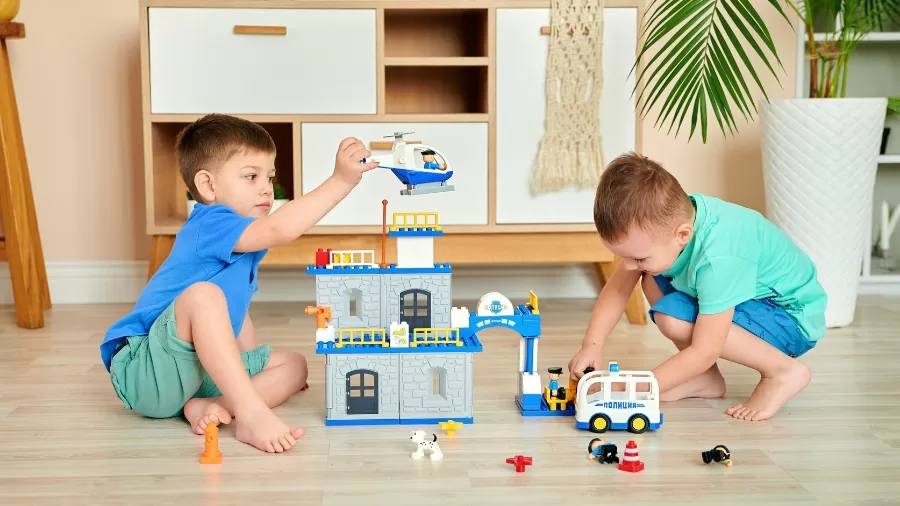Resources
What’s Inside Your Child’s Toy Box? The Rise of Eco-Friendly Playthings

- The toy business is shifting towards sustainability, with major manufacturers looking at eco-friendly materials and minimising plastic use.
- Key firms such as LEGO, Mattel, and Hasbro are driving initiatives to use recycled materials, reduce packaging waste, and encourage recycling programs.
- The transition to nature-positive toys aims to benefit ecosystems while also promoting a circular economy and sustainable consumer behaviour.
In an era when climate change and sustainability dominate the global agenda, industries across the board are looking for methods to implement greener practices. The toy sector, which is frequently associated with brilliant colours and plastic options, is no exception. Every year, billions of pounds of plastic are used in toy production, a process that is increasingly at odds with rising environmental concerns. As customers become more environmentally sensitive, the pressing question arises: Can toys truly “go green”? Major toy manufacturers are implementing efforts to develop items that not only reduce environmental damage but also actively contribute to global health. This article looks at how firms are making this vision a reality, the problems they encounter, and how eco-friendly toys are altering the industry.
The Green Toy Revolution
The traditional toy sector, which is primarily based on plastic, is coming under growing criticism as customers seek more enjoyable and environmentally friendly items. This transition has forced manufacturers to reconsider their manufacturing procedures and material choices, resulting in the birth of a green toy revolution. Companies are using sustainable strategies to lessen their environmental impact while satisfying consumer demand for safer, more sustainable products.
Every year, 1.5 million tonnes of plastic toys are produced worldwide, leading to major environmental challenges such as plastic pollution in the oceans and landfills. With only 9% of all plastic ever created being recycled, the need for sustainable solutions in the toy sector is critical.
Key Industry Initiatives
Several key initiatives are fuelling the green toy trend. Companies are looking at environmentally acceptable alternatives to standard plastics, such as plant-based biodegradable polymers, recycled plastics, and plastics found in the ocean. Minimising packaging waste is critical; businesses are using recyclable or compostable packaging materials and minimising the overall amount of packaging used. Another major factor is sourcing materials sustainably and ethically, with companies partnering with suppliers who prioritise sustainable practices and fair labour standards. Encouraging longer product lifespans through sturdy designs and repairability can help to reduce waste. Implementing recycling initiatives for end-of-life toys can also assist keep waste out of landfills.
Some toy producers are now adopting plant-based polymers, which can be derived from maize starch, sugarcane, and other renewable sources. These alternatives can cut carbon emissions by up to 80% compared to typical petroleum-based polymers.
Major Players Lead the Charge
Several toy companies are at the vanguard of the green movement, each with significant commitments to sustainability. The LEGO Group has vowed to incorporate sustainable materials into its products by 2030. The company is aggressively studying novel materials, such as plant-based polymers and recycled materials, as well as lowering plastic packaging and looking into paper-based alternatives. Mattel is using recycled plastic in its goods, including popular toys like Barbie dolls and Hot Wheels automobiles. By 2030, the company hopes to use only recycled, recyclable, or bio-based plastic materials in its goods and packaging, and it is actively working to reduce packaging waste. Hasbro has adopted recycled materials in several of its products, including Play-Doh and Nerf. The company has started recycling programs to encourage customers to recycle their discarded toys, eliminate all plastic packaging and switch to plant-based PET instead.
In recent years, there has been a rush of new eco-friendly toy firms, including Green Toys, which makes toys out of 100% recycled materials, and PlanToys, which uses sustainable rubberwood and non-toxic, water-based dyes. This growth reflects rising consumer demand for ecologically friendly products.
Challenges and Opportunities
Despite tremendous progress towards sustainability, the toy business confronts numerous hurdles. Sustainable materials and production processes can be more expensive than traditional ways, making it difficult for businesses to strike a balance between cost and environmental friendliness. Consumer education is critical in helping purchasers understand the benefits of sustainable toys and guaranteeing sustainability across the supply chain can be challenging. However, the potential for innovation and beneficial influence is enormous. By adopting sustainable methods, the toy sector can help children and the environment.
Nature-Friendly Design
The concept of “nature-positive” toys includes not just reducing environmental damage but also enhancing ecosystems. This strategy entails employing sustainable, recyclable materials, eliminating packaging waste, instituting take-back or recycling programs, and shifting to renewable energy sources in production. Nature-positive toys strive to align with broader environmental aims by reducing carbon emissions and positively impacting the world.
The circular economy concept encourages manufacturers to implement take-back schemes that enable customers to return unwanted toys for recycling or repurposing. This effort not only eliminates waste but also promotes environmentally friendly consumer behaviour.
Looking Ahead
As the green toy revolution takes traction, prominent brands such as LEGO, Hasbro, and Mattel are leading the way. These firms are making production more ecologically responsible by using novel materials, reducing packaging waste, and using circular economy models. While the route to entirely nature-positive toys will take time, dedication, and collaboration, the industry is on the right path. As firms continue to develop and consumers make environmentally friendly choices, the dream of a sustainable toy sector becomes more attainable. Together, we can make the world a healthier place for kids—one eco-friendly toy at a time.

















































